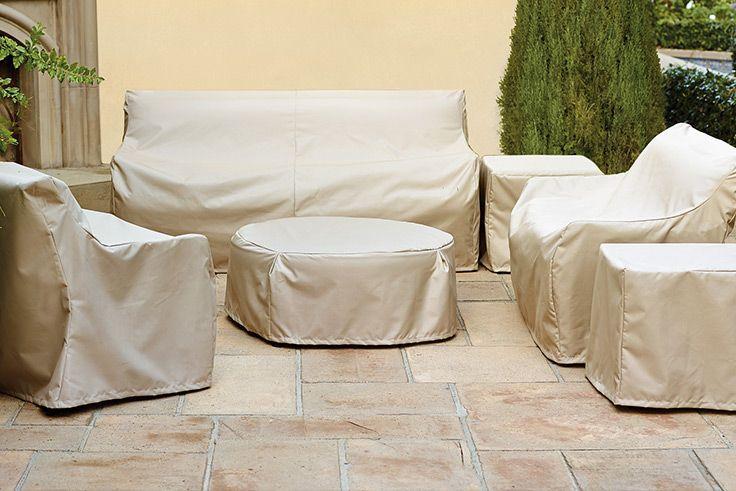Introduction
Having a cozy outdoor space is essential for individuals who enjoy spending time outside without being exposed to harsh weather conditions. Patio covers provide protection and shade, making outdoor spaces more useful. Conventional patio covers, however, use materials that contribute to environmental degradation. Green patio covers offer an environmentally sustainable alternative that minimizes the carbon footprint and enhances the aesthetic appeal of outdoor furniture covers spaces. By using renewable, recyclable, and energy-efficient materials, homeowners can create a more environmentally friendly and aesthetically pleasing outdoor area.
Advantages of Eco-Friendly Patio Covers
Choosing an eco-friendly patio cover has various advantages beyond helping the environment. These covers provide energy efficiency through heat absorption reduction, thus minimizing the need for additional cooling in nearby indoor spaces. They are also durable, implying less frequency of replacement and waste. Eco-friendly patio covers also promote healthier living by utilizing non-toxic materials that emit no toxic chemicals into the air.
Sustainable Materials for Eco-Friendly Patio Covers
One of the most important factors to take into consideration while designing a eco-friendly patio cover is the material. There are certain eco-friendly materials that possess longevity along with beauty.
Reclaimed Wood
Reclaimed wood is also a favorite when it comes to eco-friendly patio covers since it recycles material that already exists, averting deforestation. It adds a natural and rustic touch to the outdoors while being sustainable. Reclaimed wood is also durable and robust, and thus an ideal choice for a weather-resistant patio cover.
Bamboo
Bamboo is also one of the most environmentally friendly materials to utilize as it grows quickly and can be re-grown. It is also light and yet very durable and resistant to various weather conditions. Bamboo patio covers not only enhance the natural beauty of outdoor furniture covers in dubai living areas but also make excellent insulators for heat.
Recycled Metal
Recycled metal, such as steel and aluminum, is a green material to utilize as patio covers. Metal is very durable, is rust- and corrosion-resistant, and can be recycled many times without losing strength. Using recycled metal reduces the use of new raw materials and also keeps the environment free from waste.
Solar Panel Patio Covers
For homeowners looking to be as sustainable as possible, patio covers with solar panels are now a new possibility. The patio covers provide shade and gather sun power to recharge outdoor lights, fans, or even home electricity systems. Patio covers with solar panels reduce dependency on non-renewable materials and result in lower electricity costs.
Eco-Friendly Coatings and Treatments
Besides the main material, using green coatings and treatments makes patio covers more environmentally friendly. Low-VOC stain and paint prevent toxic chemical release while they also extend the lifespan of wooden covers. Natural sealants such as linseed oil or beeswax provide moisture protection but are not harmful to the environment.
Design Considerations for Sustainable Patio Covers
Environmental patio covers should be designed with utmost efficiency and natural resource use. Orientation of the cover is important because this may cut down on the amount of exposure to direct sun, which will end up cutting down indoor air conditioning bills. Adding green roofs such as a living green cover further improves the air quality while adding additional insulation. In addition, linking up water harvesting units in the cover will allow for rainwater collection for use on the lawn or outdoors.
DIY vs. Professional Installation
Homeowners who are in search of eco-friendly patio covers can either go for DIY projects or professional installation. A DIY project offers flexibility and cost-saving, especially when using reclaimed or locally sourced materials. Professional installation offers the guarantee of structural integrity and compliance with local building codes. Seeking professional guidance can also help in selecting the most suitable sustainable materials and designs tailored to the specific outdoor condition.
Cost and Long-Term Savings
While green patio covers may be more costly in the short term compared to traditional methods, they save big in the long term. Durable materials must be replaced less frequently, reducing maintenance costs. Energy-efficient designs, such as solar panel covers or reflective paint, save utility costs over the long term. Most governments and environmental commissions also offer incentives or tax credits to homeowners who install green home improvements.
Environmental Impact and Future Trends
Sustainable patio cover investment keeps a house way ahead of continuing to harm the environment. With the use of sustainable building materials, homeowners prevent deforestation, mining, and greenhouse gas production. With the increased popularity of green building trends, emerging developments such as biodegradable composites and autonomous patio covers with solar and rainwater harvesting systems are becoming increasingly popular. The fashion for outdoor home areas is in the direction of green solutions, which not only guarantee comfort but also sustainability.
Conclusion
Green patio covers provide an environmentally friendly way to increase living areas outdoors without inflicting significant harm on the environment. Their construction with renewable materials like reclaimed wood, bamboo, and recycled metal enables homeowners to create strong and attractive structures. Application of energy-efficient components such as green roofs and solar panel covers increases the degree of sustainability. Although there is going to be more initial cost, long-term cost savings, durability, and preservation of the environment provide justification for using environmentally friendly patio covers. The higher the degree of sustainability, the better is the approach towards a greener, more responsible outdoor living.


